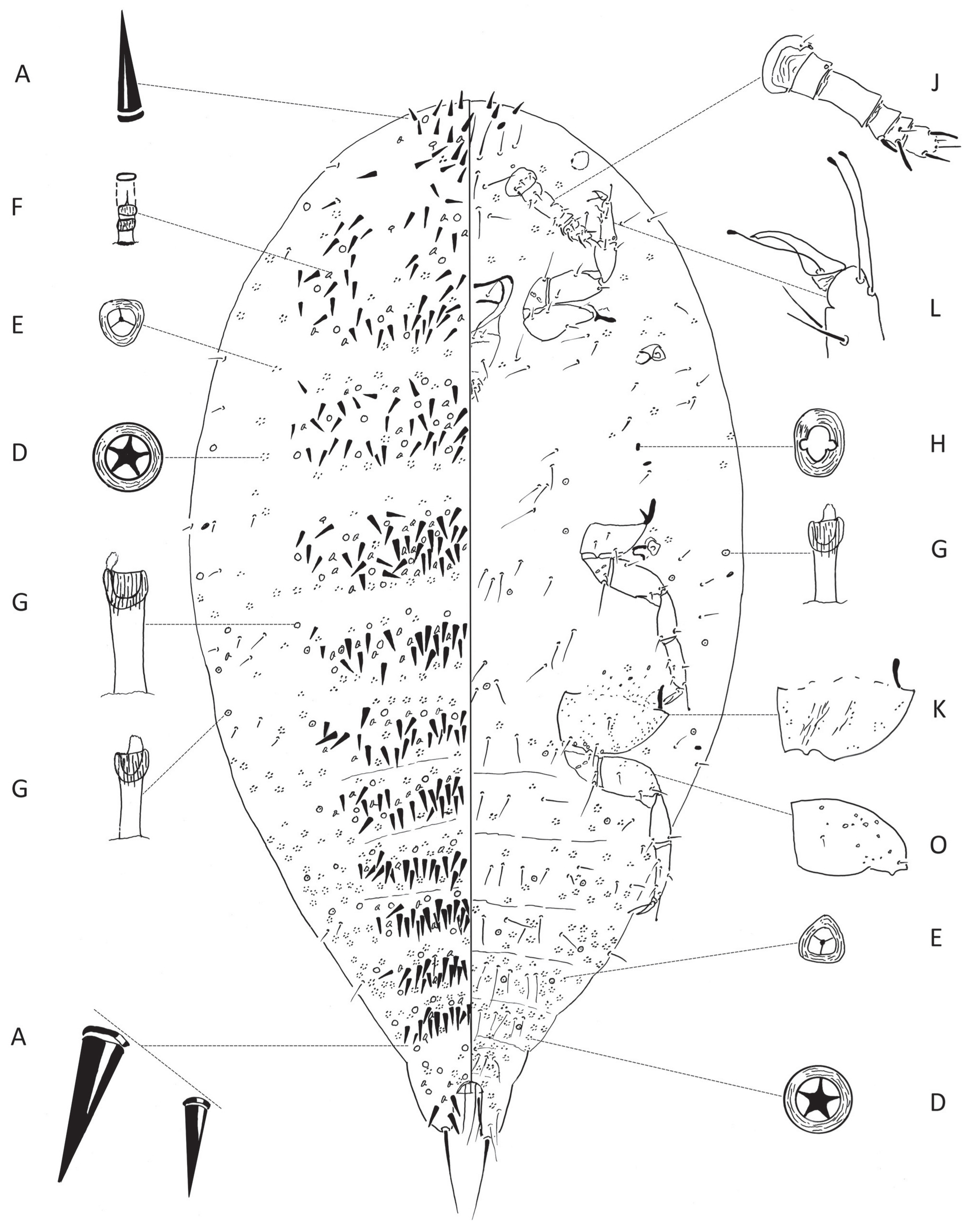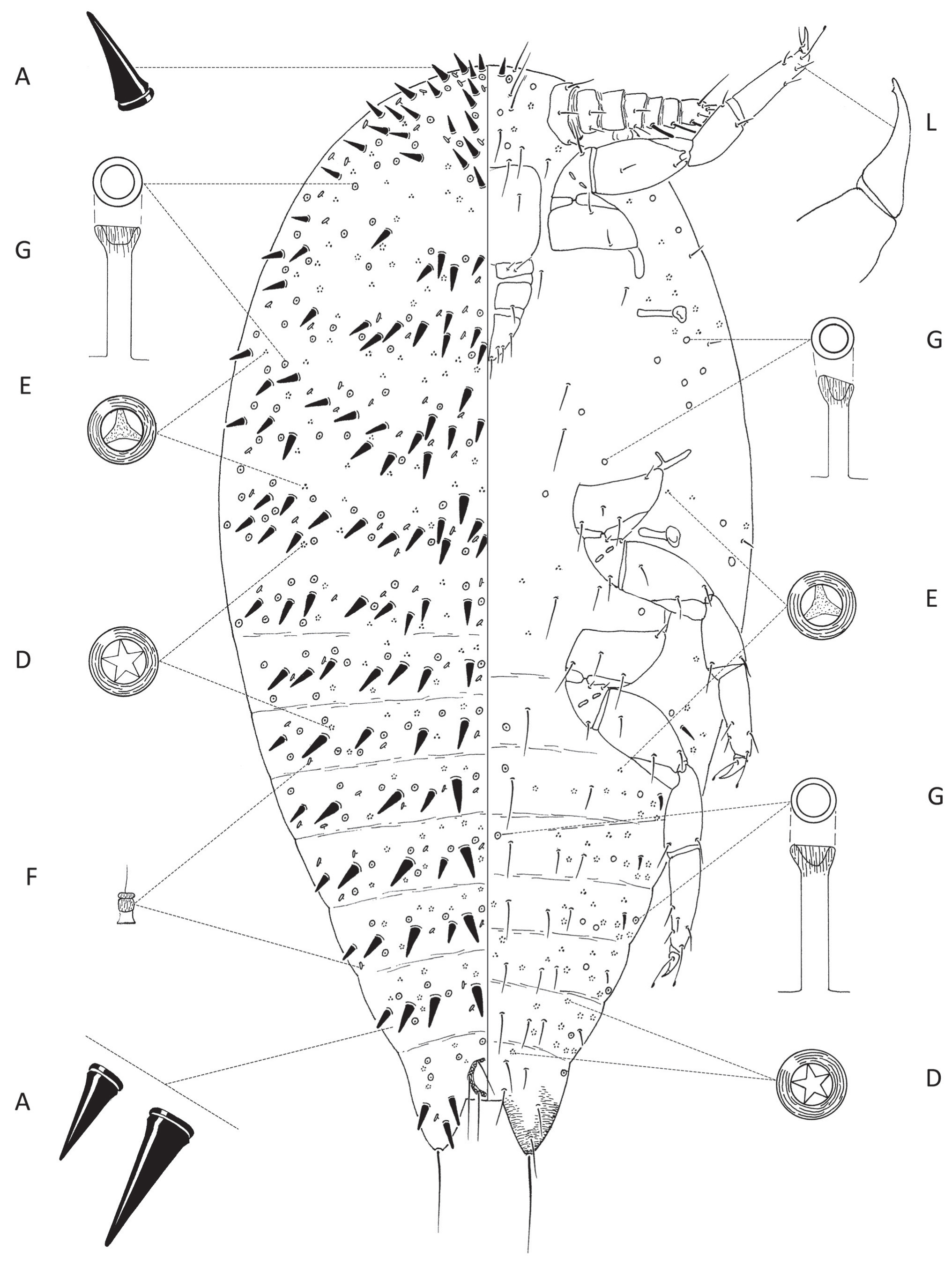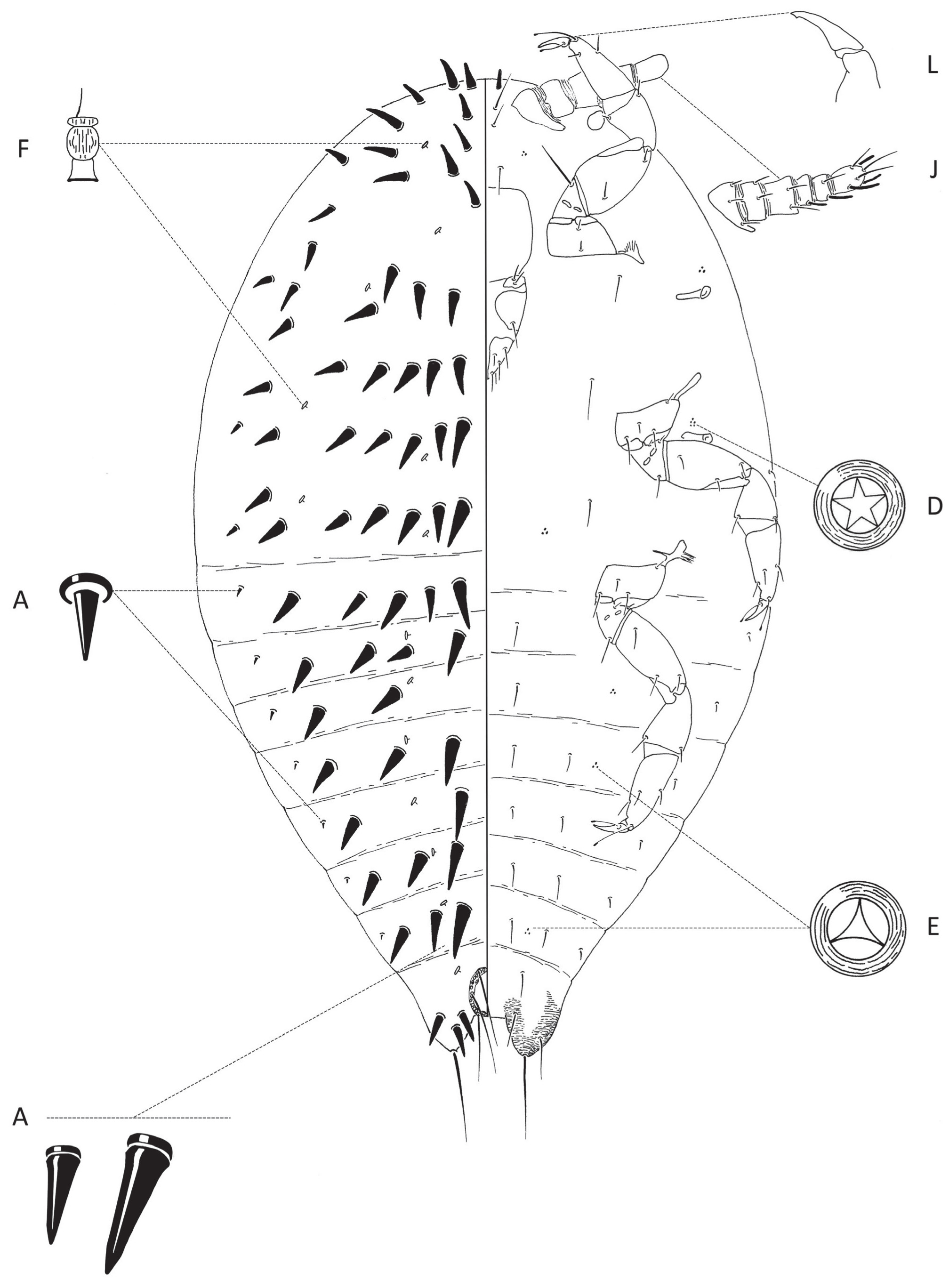Valid Names Results
Acanthococcus pennyae Miller & Stocks, 2022 (Eriococcidae: Acanthococcus)Nomenclatural History
- Acanthococcus pennyae Miller & Stocks 2022: 33. Type data: UNITED STATES: California, Imperial Co., Glamis, on Olneya tesota, 5/28/1925, by D.Dyer. Holotype, female, by original designation Type depository: Sacramento: California State Collection of Arthropods, California Dept. Food & Agriculture, California, USA; accepted valid name Notes: Paratypes: UNITED STATES: Arizona: Maricopa Co.: Mesa, II-28-1925, on Olneya tesota, P.T. Vorhies (4 first-instar nymph paratypes on 1 slide) UCD (1 slide). California: Imperial Co.: Glamis, V-18-1969, on O. tesota, D. Dyer (1 ad. ♀ holotype, 13 ad. ♀♀, 8 first-instar nymphs and 1 second-instar ♂ on 23 slides) ANIC (1 slide), NHM (3 slides), CDFA (9 slides), FSCA (2 slides), MNHN (1 slide), UCD (2 slides), UNAM (1 slide), USNM (4 slides) Illustr.
Common Names
Ecological Associates
Hosts:
Families: 1 | Genera: 1
- Fabaceae
- Olneya tesota | MillerSt2022
Geographic Distribution
Countries: 1
- United States
- Arizona | MillerSt2022
- California | MillerSt2022
Keys
- MillerSt2022: pp.12 ( First instar ) [Acanthococcus species]
Remarks
- Systematics: The adult female of Ac. pennyae is distinct when compared with other members of the genus by having: unusually large hind coxae; a few small pores on the derm anterior of the hind coxa; multilocular pores on the dorsum; enlarged setae restricted to the dorsum; and microtubular ducts absent from the venter. (Miller & Stocks, 2022) This species was sequenced by Lyn Cook based on specimens from Olneya in California, and was included in the phylogenetic analysis presented in Cook and Gullan (2004). It was labeled informally as Eriococcus sp. “CA1” in Table 1 and Fig. 1 of that publication and has GenBank accession numbers for 18S (AY795537) and for COII (AY791958). (Miller & Stocks, 2022)
- Structure: Holotype, slide-mounted specimen 1.8 mm long, 0.9 mm wide (paratypes 1.6–2.6 mm long, 0.9–1.7 mm wide). Body pear-shaped, with strongly protruding anal lobes. Anal lobes each dorsally with 3 weakly capitate enlarged setae, anteromedial seta shortest, remaining setae about equal, with 1 microtubular duct; each lobe ventrally with 3 flagellate setae including anal-lobe seta and 2 5-locular pores.
- General Remarks: Detailed descriptions and illustrations of the adult female, second-instar male, and first-instar nymph in Miller & Stocks, 2022.
Illustrations
Citations
- MillerSt2022: description, diagnosis, distribution, host, illustration, key, taxonomy, 12, 33-
- VonEll2025: distribution, 26





